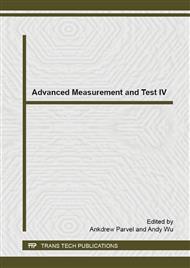[1]
Ohmori T., Finite-volume simulation of flows about a ship in maneuvering motion, Journal of Marine Science and Technology, 1998, vol. 3(2), pp.82-93.
DOI: 10.1007/bf02492563
Google Scholar
[2]
Marshallsay P. G. and Eriksson A. M., Use of Computational Fluid Dynamics as a tool to assess the hydrodynamic performance of a submarine, 18th Australasian Fluid Mechanics Conference, AFMS (2012).
Google Scholar
[3]
Ohmori T., Fujino M. and Miyata H., A study on flow field around full ship forms in maneuvering motion, Journal of Marine Science and Technology, 1998, vol. 3(1), pp.22-29.
DOI: 10.1007/bf01239803
Google Scholar
[4]
Zhao Feng, Li Shengzhong, Yang Lei and Liu Hui, An overview on the design optimization of ship hull based on CFD techniques, Journal of Ship Mechanics, 2010, vol. 14(7), pp.812-821. (in Chinese).
Google Scholar
[5]
De Barros E. A., Pascoal A. and de Sa E., Investigation of a method for predicting AUV derivatives, Ocean Engineering, 2008, vol. 35(16), pp.1627-1636.
DOI: 10.1016/j.oceaneng.2008.08.008
Google Scholar
[6]
Phillips A. B., Turnock S. R. and Furlong M., Influence of turbulence closure models on the vortical flow field around a submarine body undergoing steady drift, Journal of Marine Science and Technology, 2010, vol. 15(3), pp.201-217.
DOI: 10.1007/s00773-010-0090-1
Google Scholar
[7]
Sakthivel R., Vengadesan S. and Bhattacharyya S. K., Application of non-linear turbulence model in flow simulation over underwater axisymmetric hull at higher angle of attack, Journal of Naval Architecture and Marine Engineering, 2011, vol. 8(2), pp.149-163.
DOI: 10.3329/jname.v8i2.6984
Google Scholar
[8]
Toxopeus S. L., Atsavapranee P. and Eric W., Collaborative CFD exercise for a submarine in a steady turn, Proceedings of ASME 31st International Conference on Ocean, Offshore and Arctic Engineering, OMAE 2012, pp.1-12.
DOI: 10.1115/omae2012-83573
Google Scholar
[9]
Alessandrini B. and Delhommeau G., Viscous free surface flow past a ship in drift and in rotating motion, Proceedings of 22th Symposium on Naval Hydrodynamics, (1998).
Google Scholar
[10]
Hochbaum A. C., Computation of the turbulent flow around a ship model in steady turn and in steady oblique motion, Proceedings of 22th Symposium on Naval Hydrodynamics, (1998).
Google Scholar
[11]
Gregory P. A., Joubert P. N. and Chong M. S., Flow over a body of revolution in a steady turn, Defense Science and Technology Organisation, DSTO-TR-1591, 2004, pp.1-23.
Google Scholar
[12]
Lu Jinguo, Liang Zhonggang and Wu Fangliang, Numerical calculation on hydrodynamic performance of the submerged vehicle in turning motion, Chinese Journal of Ship Research, 2011, vol. 6(6), pp.8-12. (in Chinese).
Google Scholar
[13]
Liu Shuai, Ge Tong and Zhao Min, Simulation for submarine rotating-arm test based on added momentum source method, Journal of Dalian Maritime University, 2011, vol. 37(2), pp.1-4. (in Chinese).
Google Scholar
[14]
Wu Zhaohua, Chen Zuogang and Dai Yi, Numerical study of hydrodynamic force on ships in turning motion based on a body-force propeller model, Chinese Journal of Ship Research, 2013, vol. 8(4), pp.12-19. (in Chinese).
Google Scholar
[15]
Minnick L. M., A parametric model for predicting submarine dynamic stability in early stage design, Virginia Polytechnic Institute and State University, (2006).
Google Scholar
[16]
ANSYS, Inc. ANSYS 14. 5 Help, ANSYS Inc, (2012).
Google Scholar
[17]
Groves N. C., Huang T. T. and Chang M. S., Geometric characteristics of DARPA SUBOFF models: (DTRC model No. 5470 and 5471), David Taylor Research Center, (1989).
Google Scholar
[18]
Toxopeus S. L., Practical application of viscous-flow calculations for the simulation of manoeuvring ships, MARIN, (2011).
Google Scholar
[19]
Cao Liushuai, Zhu Jun. Prediction of submarine hydrodynamics using CFD-based calculations and RBF neural network, Journal of Ship Mechanics, 2014, vol. 18(3), pp.221-230.
Google Scholar


